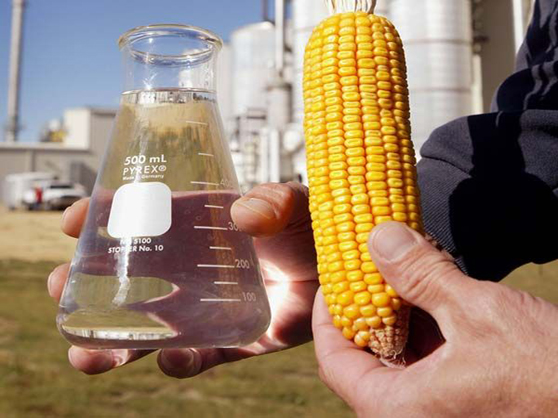
Agricultural News
New Study Questions Reliability of Ethanol Results from EPA Vehicle Emissions Model
Thu, 14 Jan 2016 11:16:05 CST

The U.S. Environmental Protection Agency's (EPA) vehicle emissions modeling system is inadequate and unreliable as a tool for estimating the exhaust emissions of gasoline blends containing more than 10 percent ethanol, according to a new comprehensive third-party evaluation of the model.
The evaluation of EPA's latest Motor Vehicle Emissions Simulator (MOVES2014) model was conducted by scientists from Wyle Laboratories, Inc., and Volpe (part of the U.S. Department of Transportation), and commissioned by the Renewable Fuels Foundation.
"Overall, it was found that the predictive emissions results generated by MOVES2014 for mid-level ethanol blends were sometimes inconsistent with other emissions results from the scientific literature for both exhaust emissions and evaporative emissions," according to the study. "-results and trends from MOVES2014 for certain pollutants are often contrary to the findings of other studies and reports in the literature."
Of particular concern is that the MOVES2014 model predicts increased exhaust emissions of nitrogen components and particulate matter as the ethanol content in gasoline increases, even though real-world emissions testing based on mid-level ethanol blends has shown distinctly opposite trends. "The results from other researchers often show ethanol-related emissions trends that are different than the MOVES2014 results obtained for this study-" the study found. "In some cases not only were magnitudes different but different trends were presented."
The study's authors suggest the MOVES2014 model's questionable predictions for certain emissions likely result from the use of data that misrepresents the actual parameters and composition of mid-level ethanol blends. Specifically, the default ethanol blend data in the model is based on arcane "match blending" methods intended to "match" specific fuel parameters, rather than "splash blending" methods that are used in the real world. According to the study, "-real-world splash blends may not have the same attributes as the modeled default match blends used in MOVES, and actual emissions may be different than the emissions predictions from MOVES."
These likely distortions are then multiplied through the use of overly restrictive adjustment factors and equations. The authors write that "-the trends used to determine constants in the model's equations may need to consider many more variables than are now being considered," and "the adjustment factor approach may need to be more robust and consider the changes to emissions as a function of all properties, not independently."
In an attempt to simulate the emissions of mid-level ethanol blends created using real-world "splash blending" practices, the Wyle and Volpe scientists performed an analysis where certain fuel parameters were modified. However, the model still produced questionable results that suggested increases in emissions of nitrogen components and PM as ethanol content increases.
To correct the deficiencies with the MOVES2014 model, the authors recommend obtaining new mid-level ethanol blend emissions data using blends that better represent real-world fuel properties and blending practices. They write that "-additional vehicle exhaust testing from mid-level ethanol blends with well-defined fuel properties is recommended."
Commenting on the findings of the new study, RFA President and CEO Bob Dinneen said:
"This is more than an academic exercise. The MOVES model is used by state regulators to assess air quality and determine their progress and compliance with national emissions standards. It is thus essential that EPA's model be accurate and based on sound science. Unfortunately, this analysis concludes that just like EPA's now dated and misguided carbon intensity modeling for ethanol, the MOVES model is fundamentally flawed and biased against ethanol."
To read the evaluation, click here.
WebReadyTM Powered by WireReady® NSI
Top Agricultural News
More Headlines...





